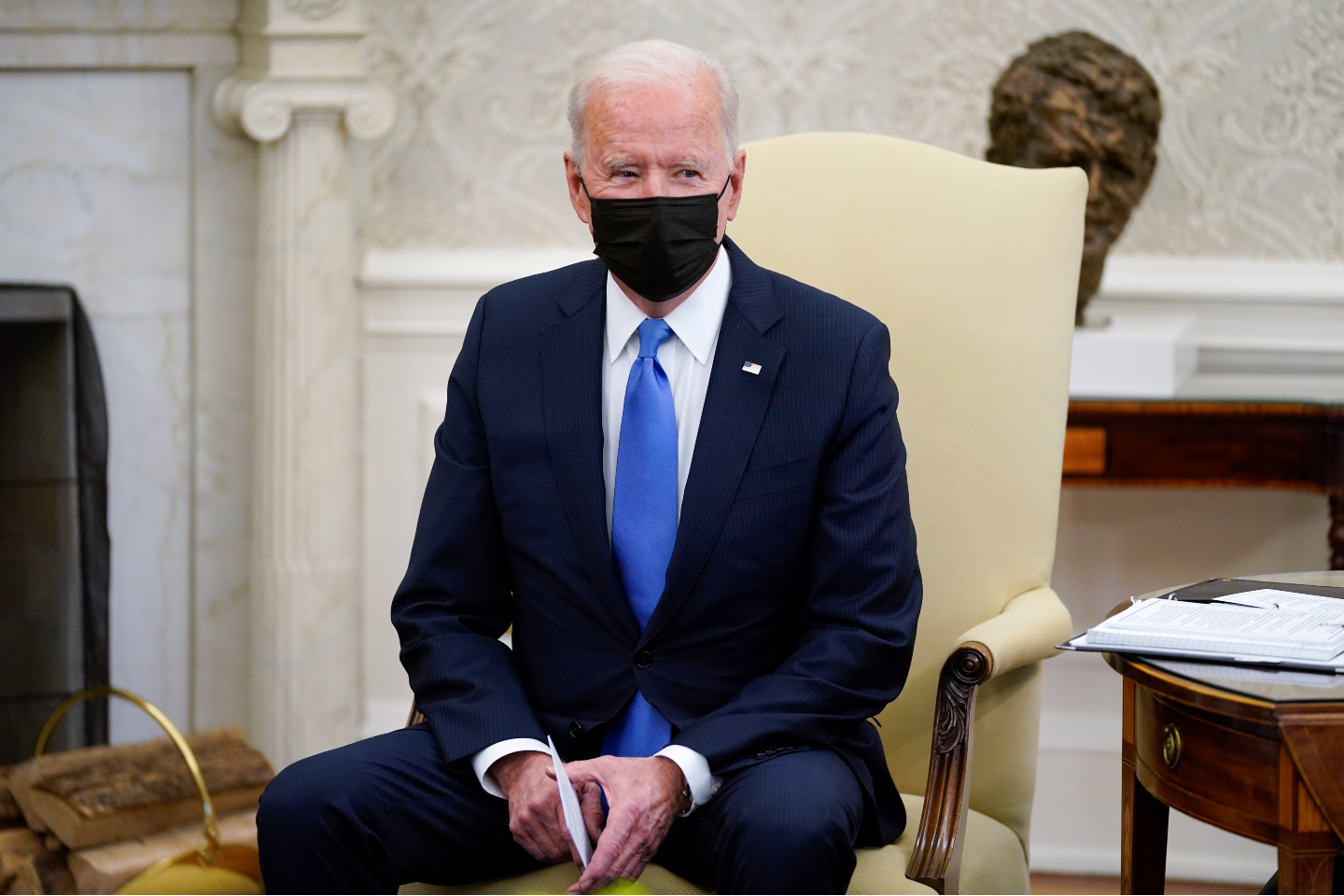
On Friday, President Biden released a $6 trillion budget proposal for fiscal year 2022 that includes his infrastructure and families plans, kicking off the next phase in the federal budget process.
The White House’s proposed spending is likely to be reduced after it goes through a Congress with a 50-50 Senate and a narrow Democratic House majority. But in its rollout, several news outlets suggested that $6 trillion was an eye-popping amount of money: NPR’s headline called the proposal a “huge hike in government spending;” a New York Magazine blog post called it “enormous;” ABC blared about the “costly pandemic recovery and jobs plans.”
Biden’s budget is an increase of about 4% in terms of proposed spending as a percentage of total Gross Domestic Product (GDP) compared with presidential budget proposals going back to 2013. Biden’s budget proposes spending equal to 25.6% of GDP in 2022, while Trump’s 2021 budget called for spending equal to 22% of GDP and his 2020 budget called for 22.7% of GDP in spending.
This post’s graphics are best viewed on a larger screen, like a desktop or laptop, rather than a mobile device.
The news media’s reaction to Biden’s $6 trillion figure is based on the idea that it’s about a trillion dollars more than President Trump would have budgeted to spend next year. The Trump administration’s FY2021 budget proposal, created as the coronavirus pandemic was deepening, was for $4.8 trillion on paper. But the economic crash and social needs of the COVID pandemic upended the federal government’s habit of spending only around 20% of its GDP since 2013. Actual government outlays topped $6.5 trillion in 2020, amounting to 31.2% of GDP, while spending in 2021 on recovery from the pandemic will be over $7.2 trillion, up to 32.9% of GDP.
Biden’s FY2022 budget would drop outlays to 25.6% of GDP and then projects to hold them around 24.5% of GDP through 2031, though outlays are typically higher than the amount requested by the president in their budgets.
Each year, the White House’s budget signals the administration’s priorities to Congress, which then works to pass a budget resolution and various appropriations bills by the end of September, before the start of the new fiscal year on October 1—or, if at odds, Congress passes continuing resolutions. This year, there were no big surprises in the White House’s detailed budget request, which had been summarized in a preview early last month. Both the major infrastructure and families plans had been released over a month ago.
The White House’s budget was submitted relatively late this year, a result of the runoff elections in January that determined the Senate would be split 50-50 between the parties, and the continuing debate among Senate Democrats over passing bills through the budget reconciliation process to avoid the legislative filibuster rule.
With their total proposed spending spread out over eight years and 10 years, respectively, the $2.3 trillion American Jobs Plan and the $1.7 trillion American Families Plan would boost investment in infrastructure like roads, bridges, and broadband, as well as on universal pre-K, elder and child care, and paid leave. (In negotiations with Senate Republicans, Biden has recently dropped his infrastructure plan sum to $1.7 trillion, but Mitch McConnell’s caucus is still unlikely to provide the 10 votes that would be needed to invoke cloture and move to vote on the bill.)
If both passed as-is, the Biden infrastructure and families plans would average around $444 billion in additional spending per year—a significant amount, but just 2% of current GDP of $22 trillion. (National GDP was $20.93 trillion in the pandemic-hit 2020, down from $21.43 trillion in 2019 and just up from $20.58 trillion in 2018.)
Put another way, a $444 billion per year investment is under 16% of what the U.S. spent in 2019 on Social Security, Medicare, Medicaid, and other mandatory programs, not counting discretionary spending. The U.S. has spent $6.4 trillion on the wars in Afghanistan, Iraq, Syria and Pakistan since 2001.
Biden proposes to raise revenue by bringing the corporate tax rate back up to 28% from the 21% level set in the 2017 Republican tax bill, as well as by increasing the top capital-gains tax rate and adequately staffing the Internal Revenue Service so it can better crack down on tax evasion. The White House budget projects GDP will grow by over half by 2031, to nearly $33.4 trillion.
Here are the president’s $6 trillion budget proposal’s major categories, including mandatory and discretionary spending:
Biden’s budget proposal leaves out major campaign pledges and areas of investment, from a public option for healthcare to forgiving student debt. Toward finding savings and making more productive investments, progressives, including some members of Congress, are calling on the White House to make significant cuts to the Pentagon budget. From the $753 billion in proposed military spending next year, the People Over Pentagon campaign in May 2019 identified $199 billion in potential cuts, and the Poor People’s Campaign Moral Budget last year found $350 billion in potential cuts to militarized spending.
Even if Congress passes budget bills for next year at the $6 trillion level, the U.S. would lag behind peer countries in the Organisation for Economic Co-operation and Development (OECD) in government spending as a share of GDP, especially as compared with countries that have half the poverty rate that the U.S. has.
The OECD publishes a broad indicator of general government spending, one meant to highlight the variety of countries’ approaches to deliver public goods and services, not necessarily differences in resources spent. Across the 37 member countries of the OECD, for 34 countries with OECD data available for 2019 or the nearest recent year, the average government spending as a share of GDP was over 42%, with the U.S. lagging at 38%. When ranked by OECD poverty rate, defined as the ratio of the number of people with income under half the median household income, the half of the group with lower poverty rates spent an average of 44.8% of GDP, compared to 39% in the half with higher poverty rates.
In Pentagon spending, the Biden budget proposes a $12 billion increase over the last Trump budget, and over $100 billion more than the final defense department budget of the Obama administration. Biden is requesting more than Trump for the Immigration and Customs Enforcement (ICE) agency and for the dysfunctional F-35 fighter jet, analysis from the Security Policy Reform Institute found.
For more tracking of how Congress spends trillions of dollars in public funds every year, get the Sludge newsletter.
